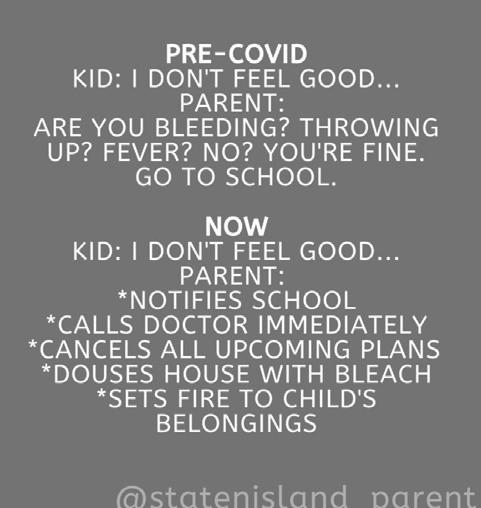
4 minute read
Dear Teacher: Real Questions Answered by Real Educators
Dear Teacher
Experienced educators and authors Peggy Gisler and Marge Eberts give solid advice about everything school and education-related.
Parents should send questions and comments to dearteacher@dearteacher.com
Addition and Subtraction Concepts
QUESTION: My third grader was still having problems with basic addition and subtraction at the end of second grade even though he had extra assistance at school. Is there any way I can help him now? – Math Problem
ANSWER: Children need to be able to recall basic facts quickly and automatically. Usually by the end of second grade, most students have automatic recall of not only the addition facts but also the subtraction facts that they are expected to know. Mastery of a fact means giving the response in less than 3 seconds or 30 correct per minute. However, this is for an oral response, and more-time may be needed by young children. Being able to complete 50 problems in 3 minutes is definitely a reasonable goal.
Fortunately, you can help your child adopt strategies to help him learn the basic facts fairly easily. Work on this now whether he is in regular or online school. Before you begin teaching number strategies, observe which numbers your child cannot add automatically. These are the ones you want to help him learn.
Don’t confine teaching a strategy to just flash cards; use dice, spinners, coins, markers and simple games. Move slowly. Begin by working with the “one-more-than” (3+1). Then go on to (2 +2) and (3+3). For example, for the problem (3+1), he can lay out three items and then add a fourth. Having him use a strategy like this ensures that he is solving the problem. Doing this repeatedly will help him learn each fact rather than telling him or showing him an answer.
Here’s another way for you to help your child learn the basic facts, it is enjoyable because it involves playing games. Since ten is the basis of our number system, it is very important for children to become familiar with all the number combinations that make ten when added together (5+5, 8+2, and so on). Our “Bean Game” will help them do this.
Color one side of ten beans (coins or counters) with marking pens, nail polish, or
paint. Place the beans in a container that can be used as a shaker. Two or more players can enjoy this game. The first player shakes the container and dumps out the beans, He or she then counts the number of painted and unpainted beans, states the combination: four painted plus six unpainted equals ten, and writes down the number of painted and unpainted beans on a chart. The player continues until he or she hits a previously rolled combination. Then it’s the other player’s turn. The winner is the player who shakes the largest number of different combinations in his or her turn.
In “Take Away Game,” items are being removed from a group. You’ll want to use flash cards with simple facts like 2-1, 4-2, 5-3, and 5-4. Have your child draw a card at random, then you need to make up a story. For example, for 3-1 you could say, “I have three nickels; if I take away one, how many would I have left? Your child should lay out three counters and take away one to show how many are left. Then he or she should make up stories for the remaining flash cards and use counters to illustrate how “take away” works.
Finally, go on our website dearteacher.com and look at the Math Skill Builders and the Math Learning Activities for more ideas on teaching the basic facts.
Free Books to Assist Learning Disabled
PARENTS: Here is a good source for children and adults as well who cannot read traditional print books because they have a visual impairment, physical disability or severe learning disability. The source is Bookshare.org, an ebook library of more than 800,000 books, that makes reading easier. Individuals with reading barriers can customize their experience and read in ways that work for them. With Bookshare books become accessible because they can be read by: • Listening to books with high quality text-to-speech voices. • Hearing and seeing highlighted words on screen. • Reading with digital braille or enlarged fonts. • Reading directly from your Internet browser.
This great program is totally FREE; however, individuals must qualify to participate in it. Children who struggle with reading and have an IEP or a 504 plan can be signed up for Bookshare providing a competent authority confirms that the learning disability significantly interferes with reading. Children and adults with low vision blindness and some physical disabilities can also participate providing a competent authority confirms that their disability interferes with reading.
On the bookshare.org website, you can access a number of brochures and flyers to learn more about the many ways to read Bookshare books. There are also helpful video tutorials as well as additional resources for parents and students.
ST. JOSEPH HILL ACADEMY ELEMENTARY SCHOOL
Providing a premier Catholic education,
Pre-K to Grade 8,
to the Staten Island community for 100 years.
Middle States Accredited
Mother Franciska Early Childhood Center
Featuring 3 & 4 year old programs.
Call for information.
Before & After Care Available

850 Hylan Blvd • SI, NY 10305 718.981.1187 x9136 • stjosephhillacademy.com



Need a good laugh? A dose of inspiration? Hot topic highlights?








